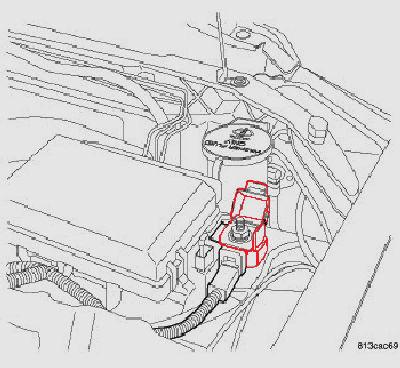JUMP STARTING YOUR CHALLENGER
|
WARNING: |
Review all safety precautions and
warnings in the battery system section of the service manual. (Refer to 08 - Electrical/8F - Engine
Systems/Battery System/BATTERY - Standard Procedure)
Failure to follow these instructions may
result in serious or fatal injury. |
|
CAUTION : |
When using another vehicle as a booster,
do not allow vehicles to touch. Electrical systems can be damaged on either
vehicle. |
|
NOTE: |
The battery is stored under an access
cover in the trunk. Remote battery terminals are located in the engine
compartment for jump starting. |
TO JUMP START A DISABLED VEHICLE:
1.
Wear eye protection and remove any metal jewelry, such as watchbands or bracelets, that might make an inadvertent electrical
contact.
2.
When boost is provided by a battery in another vehicle, park that vehicle
within booster cable reach, but do not allow the vehicles to touch one another.
3.
Set the parking brake, place the automatic transmission in PARK, and turn the
ignition switch to the LOCK position on both vehicles.
4.
Turn off the heater, radio, and all unnecessary electrical loads.
5.
Connect one end of the jumper cable to the remote jump-start positive battery
post (+) in the engine compartment.
Connect the other end of the same
cable to the positive terminal of the booster battery. Refer to the following
illustration
for jump-starting connections.

6. Connect the other cable, first to the negative terminal of the booster
battery and then to the engine ground (-) of the vehicle with the discharged
battery.
Make sure you have a good contact on
the engine ground. Refer to the following illustration for jump-starting
connections.
7. Start the engine in the vehicle that has the booster battery. Let the
engine idle a few minutes.
Then, start the Engine in the vehicle
with the discharged battery.
NOTE:
Refer to "Synchronizing ESP" under "Electronic Stability
Program" in Section 5 if the ESP/BAS light (in the instrument cluster)
remains on continuously
after starting the engine of the vehicle with the discharged battery.
8. When removing the jumper cables, reverse the above sequence exactly. Be careful of the moving belts and fan.
|
WARNING: |
|